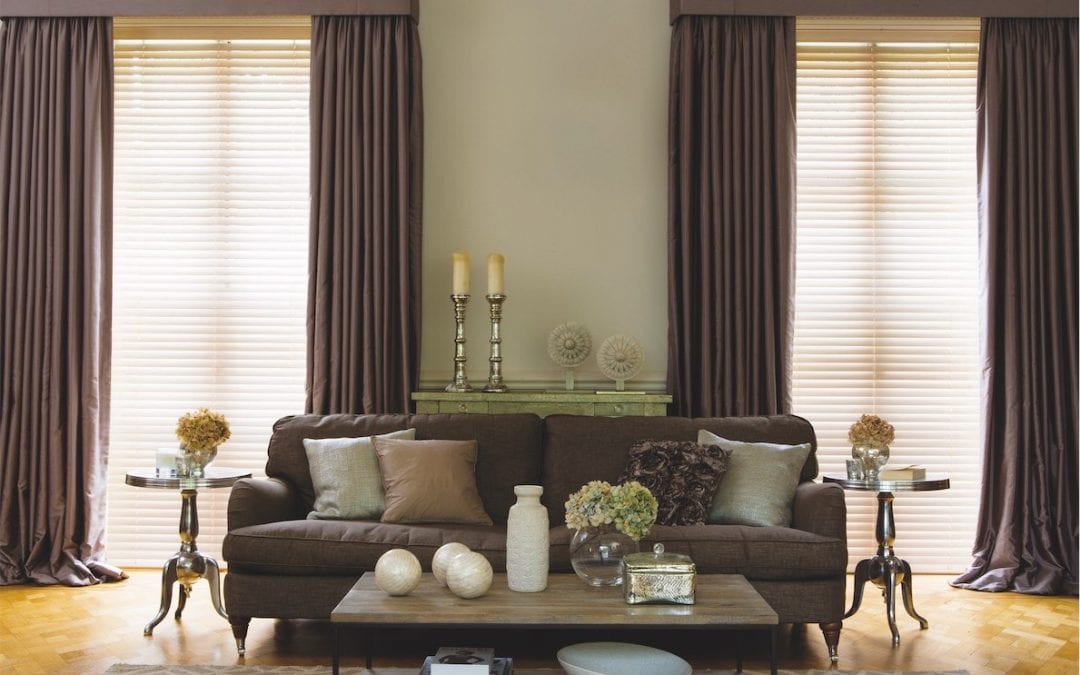Misty mornings, a nip in the air and the transition from gentle breeze to full-on gale; winter truly has arrived. As the temperature drops and the days get darker, we all have a tendency to use more energy during the colder months, something that is difficult to avoid. But with climate change now hitting the headlines on a regular basis, wasting more energy isn’t really something we can afford.
According to a report from the Department of Energy and Climate Change, domestic homes were found to be the second largest consumer of energy in the UK, with 27% usage (transport was first). While this may come as a slight shock, it actually shows how much of an impact homes can have on our planet. In the spirit of Big Energy Saving Week between October 26th and 30th, Budget Blinds are here to give you their top tips on how you can do your bit for the planet, by making your home more energy efficient.
One of the quickest and easiest changes you can make in your home is to look above your head and make a few simple swaps. More inefficient bulbs such as incandescent lights can waste as much as 90% of the energy they use, so the majority of what they consume isn’t being used to brighten your surroundings. This means that more energy is used in order to just power the bulb to do its job. LEDs are a far more energy-efficient option; they don’t give off extra heat, can last up to 10 times longer than their more wasteful counterparts and, according to Which?, use up to 90% less energy.
Insulate from within
When they hear the word insulation, most people think of pink fibreglass under the floorboards of an attic or inside the walls of your home, but believe it or not, the way your home is furnished on the inside can actually have an effect on energy efficiency.
Sinking into the squashy embrace of an old armchair is a truly unbeatable feeling. Inside the very material of these comfortable creations are dozens of air bubbles or gaps, and while these allow the chair to mould to your relaxing body, they are also an ideal form of insulation. Because of this clever design, soft furnishings scattered around your home such as sofas and chairs, will retain heat and allow less energy to escape and be wasted.
Windows are perfect for letting in light, and while it may be tempting to leave the curtains open for as long as possible during the winter months, you could actually be losing a tremendous amount of energy this way. According to the Energy Saving Trust, as much as 20% of heat can be lost through windows and doors. The more that is wasted, the more we compensate by cranking up the thermostat and the more fossil fuels are burned. But there is a simple and easy solution. Research from the Glasgow Caledonian University for English Heritage has discovered that by installing roller blinds to single-glazed windows, heat loss can be reduced by as much as 40%. And with so many designs to choose from, whoever said you couldn’t save the planet in style?
For added efficiency and a new splash of colour outside your home, you can buy masonry paint that will insulate your walls from the outside. But did you know that interior paint can also make a huge difference? From a psychological standpoint, the colour of your rooms can affect how warm or cold you perceive the temperature to be. If a particular room in the house has a tendency to get a little nippy, warmer tones such as red, orange and yellow are perfect as they create a sense of cosiness. On the other hand, lighter hues such as pale pink, beige, white and cream retain less heat and can be used to create a cooler atmosphere.
Last but not least, what’s under your feet?
There are two sides to every story, and carpet in terms of energy efficiency is certainly one of them. Although carpets feel comfy between your toes, they can get worn quite easily and therefore have a limited lifespan. Many carpets aren’t recyclable either. And while tiled or hardwood floors will last longer, they aren’t particularly efficient as a great deal of heat can be lost through the floor. So why not have the best of both worlds? For an inexpensive solution to warming your home from the inside, why not add a rug to your living room or bedroom? They are also perfect for adding style and a splash of colour.
Research from The Carpet Institute has found that 10 – 20% of heat can be lost through uninsulated floors, and they also say “the thicker the carpet, the greater the thermal insulation provided.” Our extra top tips for adding rugs: make sure you look for carpets that are at least 1 cm thick, and don’t forget to add an underlay for an extra layer of comfort and insulation.
The change of seasons may be upon us, and with it cold weather arriving, but that doesn’t mean that energy efficiency has to be forgotten. Although it is natural for us to use more energy in the winter, whether that’s through lights being on longer or higher thermostats, this guide highlights five ways we can all make simple changes, and do our bit to help the planet.
 FREE PROFESSIONAL INSTALLATION
FREE PROFESSIONAL INSTALLATION
 OVER 20 STYLES OF BLINDS AVAILABLE
OVER 20 STYLES OF BLINDS AVAILABLE
 UNBEATABLE 3 YEAR GUARANTEE
UNBEATABLE 3 YEAR GUARANTEE
 FREE HOME DESIGN SERVICE
FREE HOME DESIGN SERVICE

